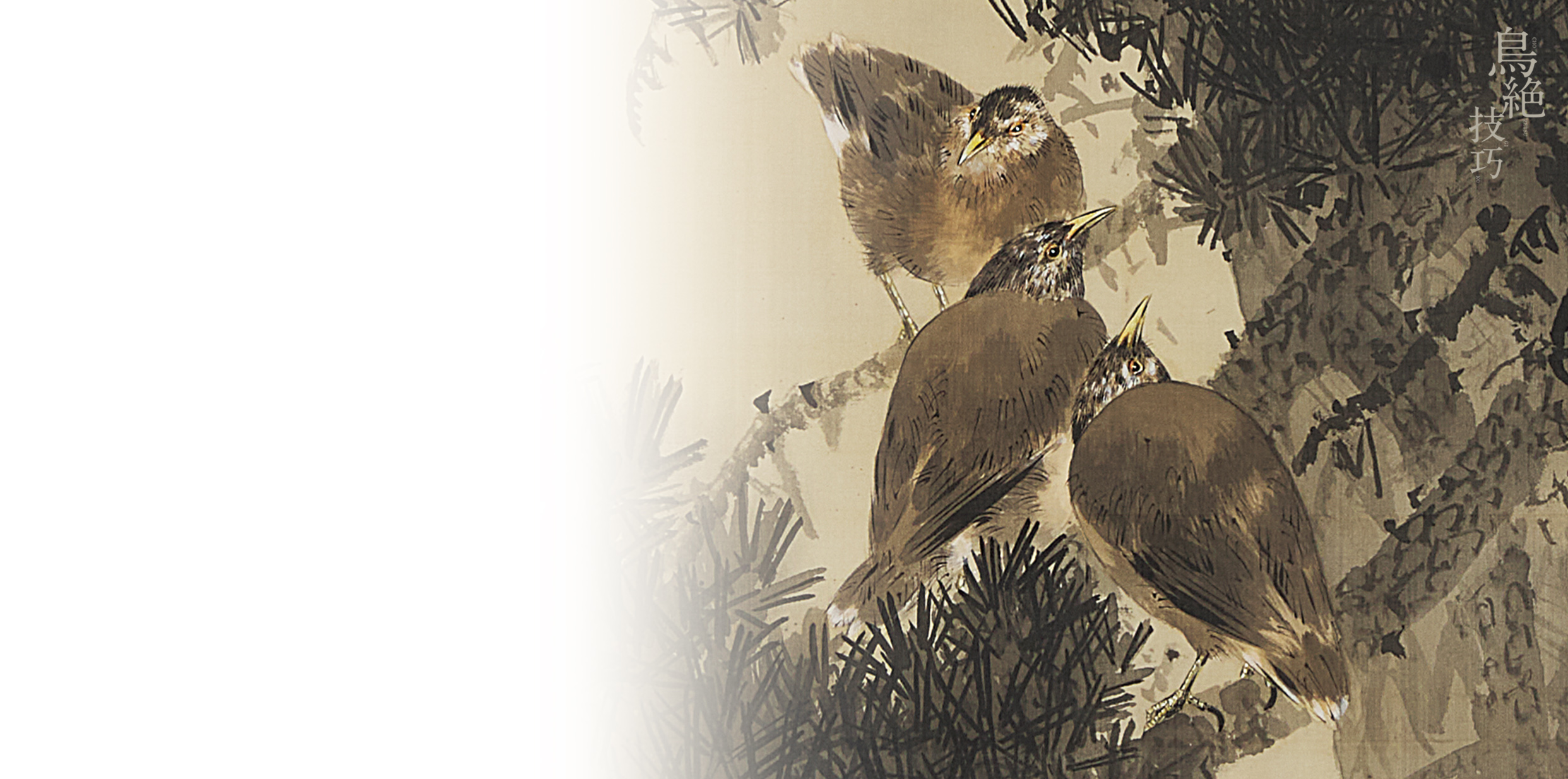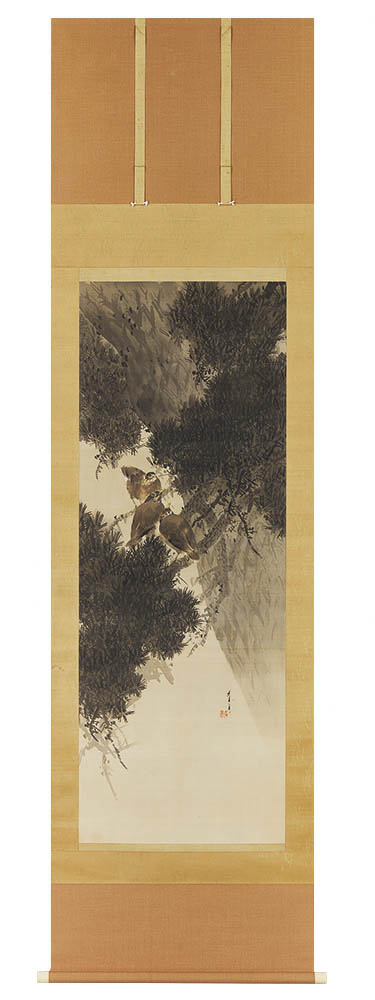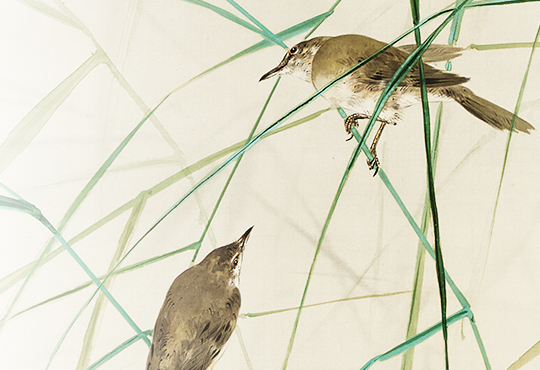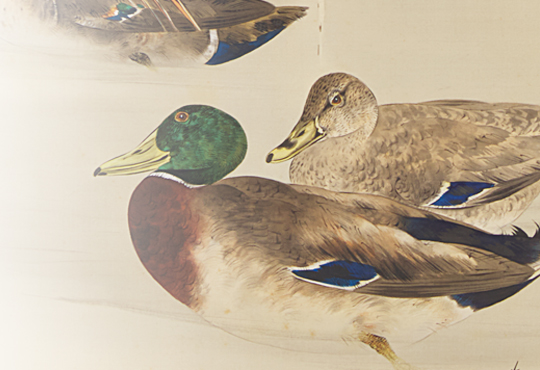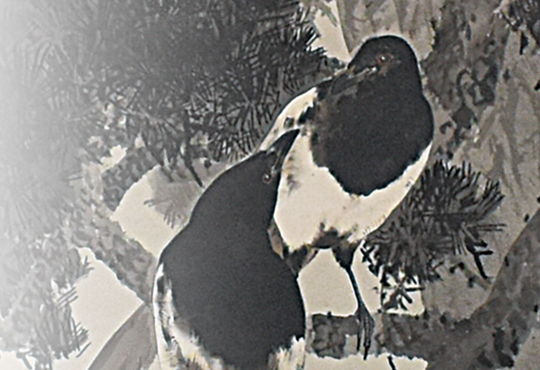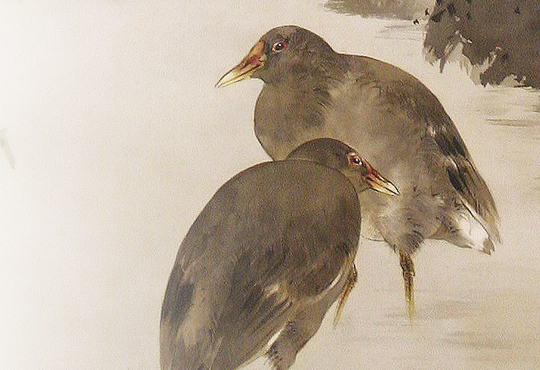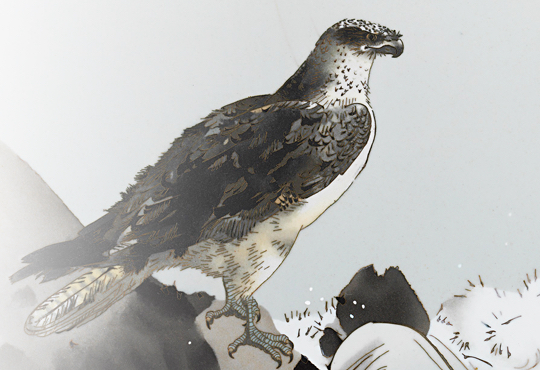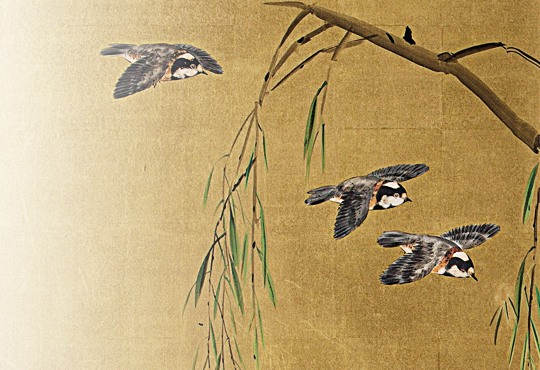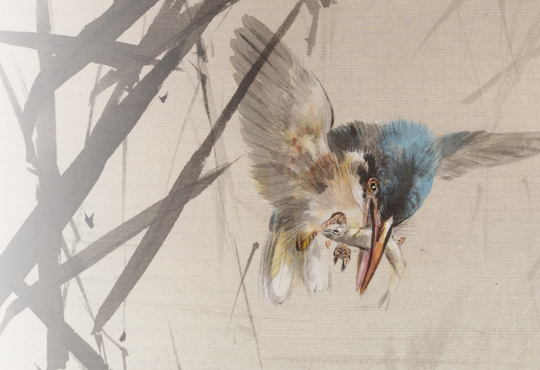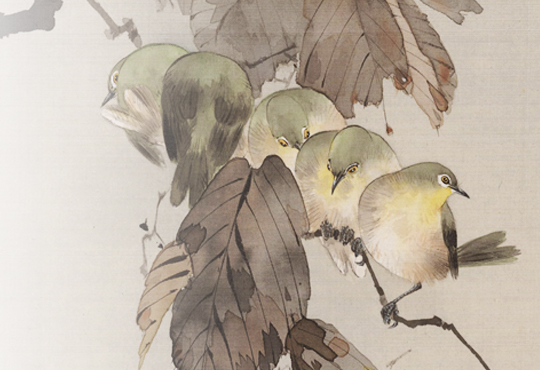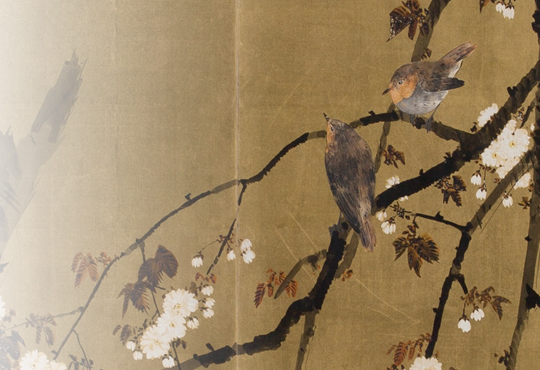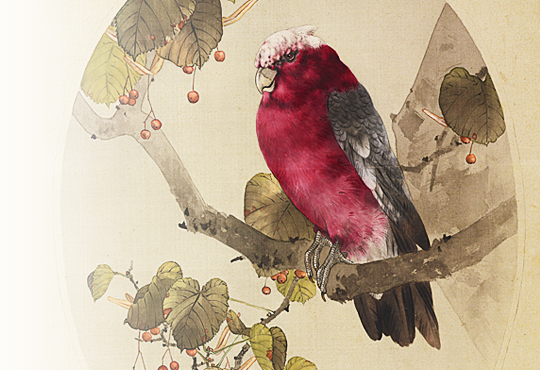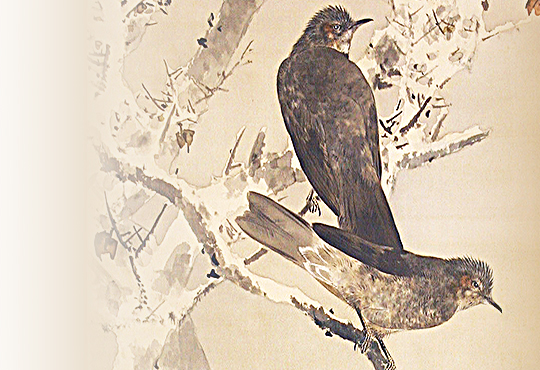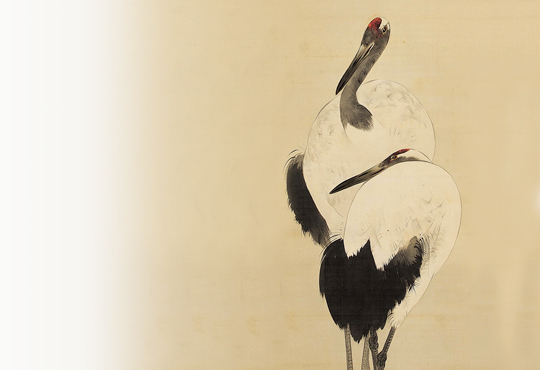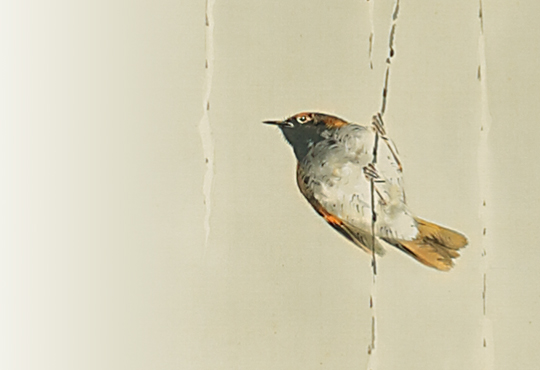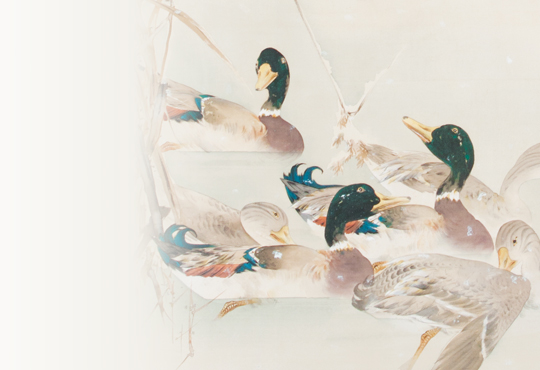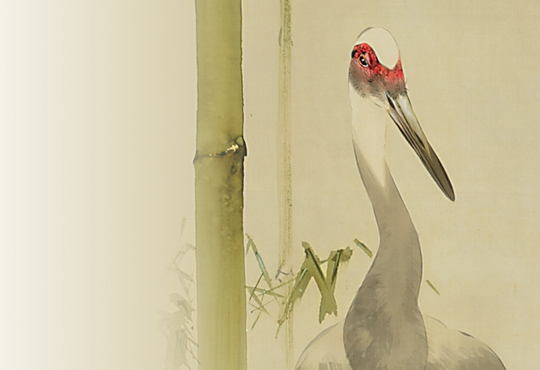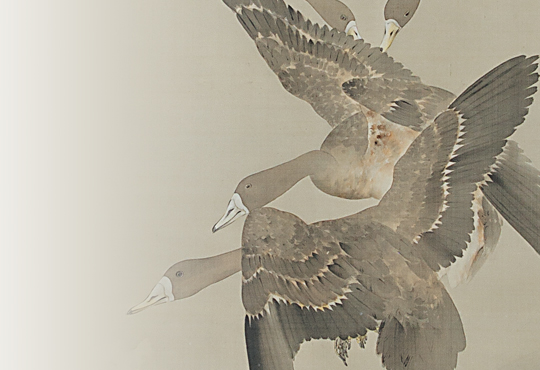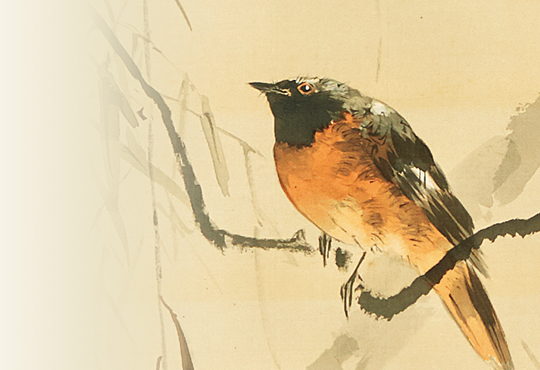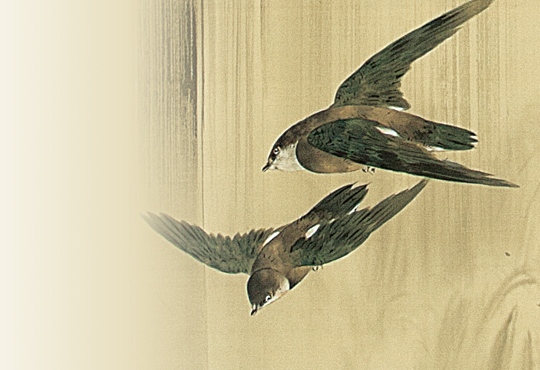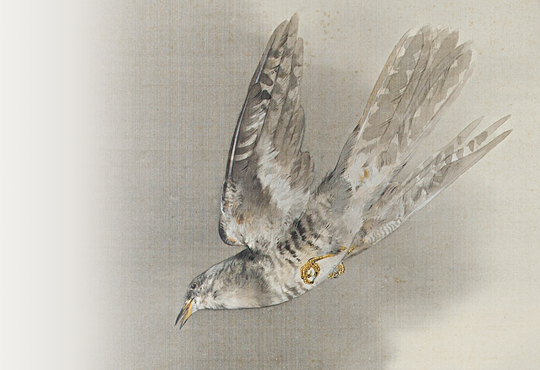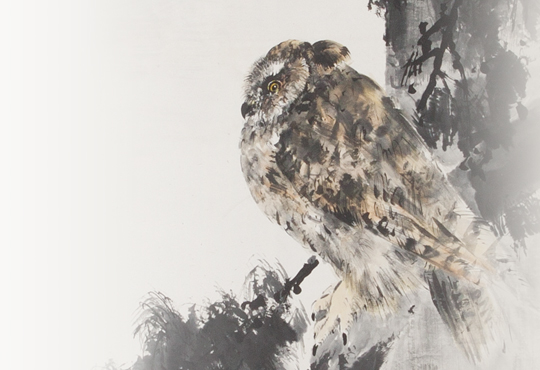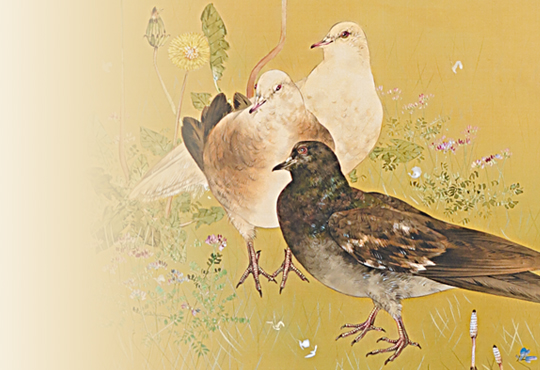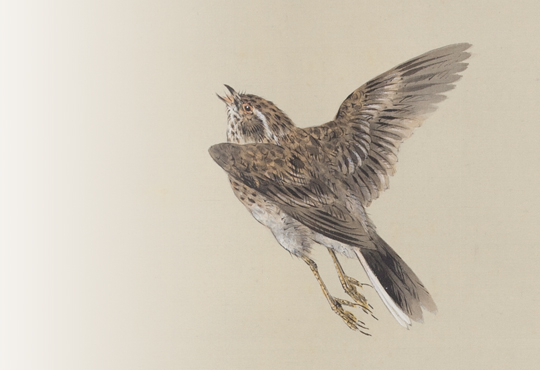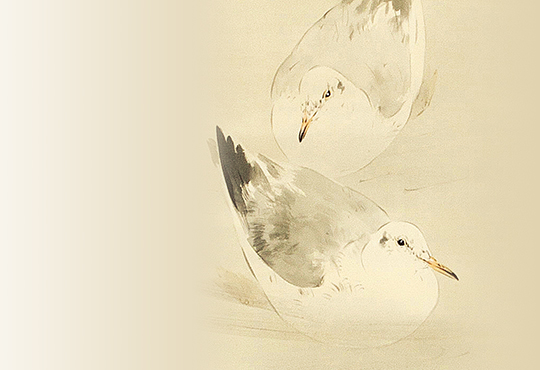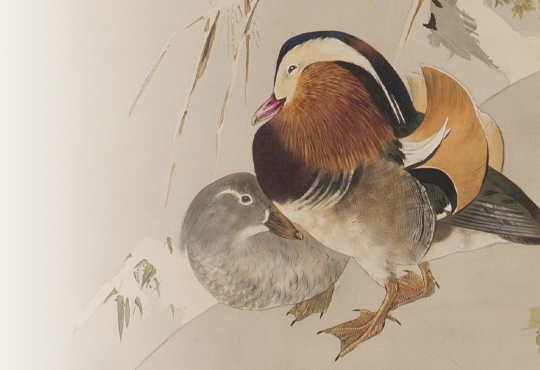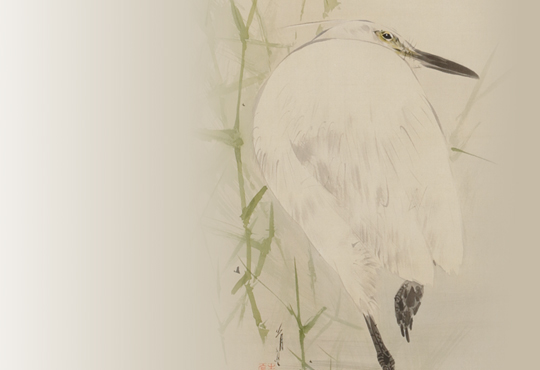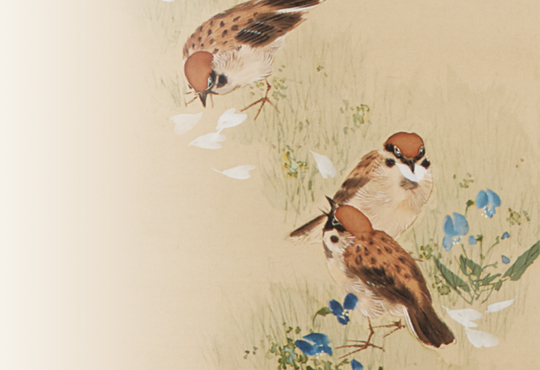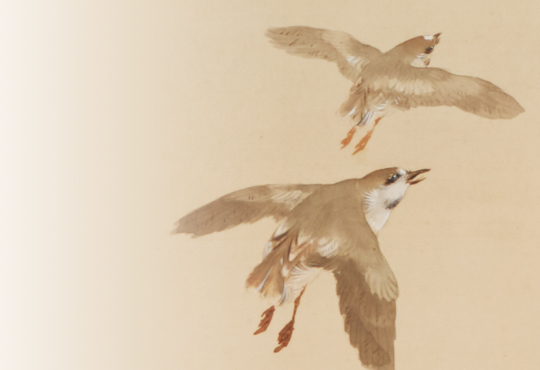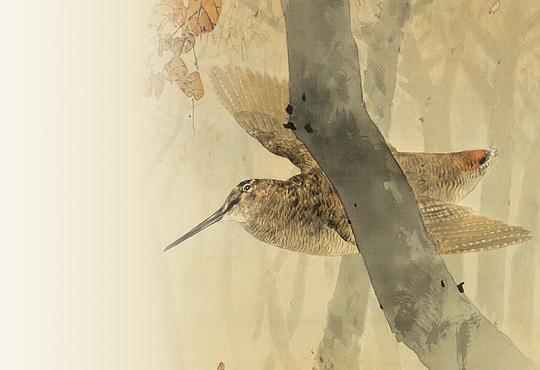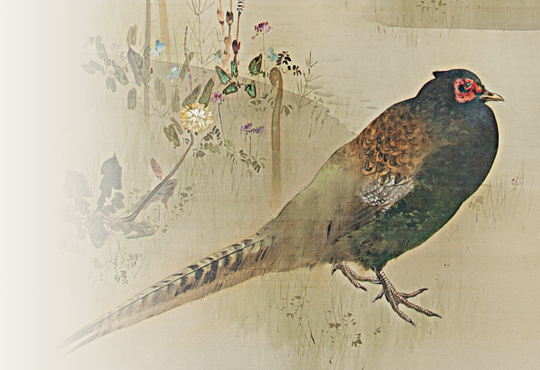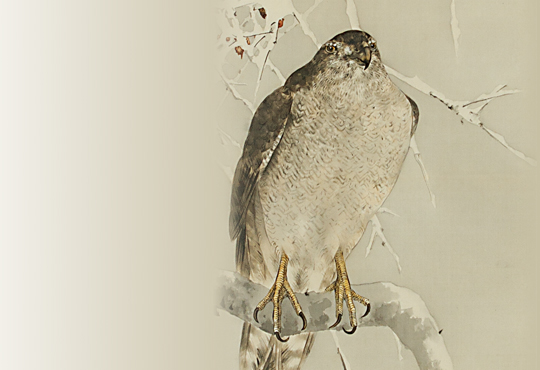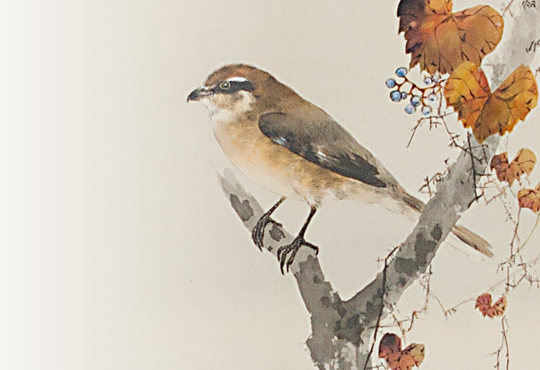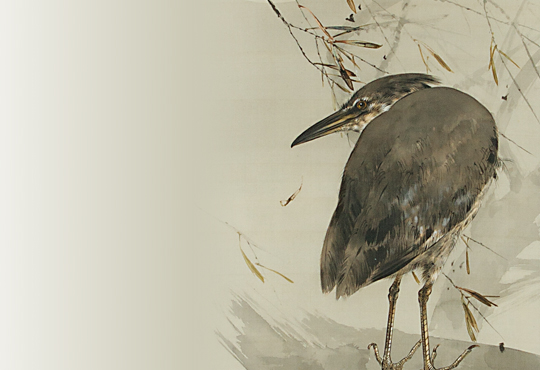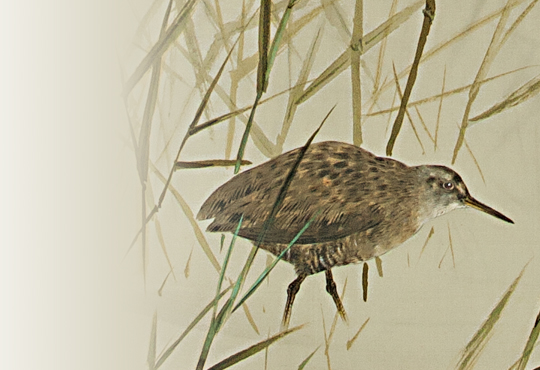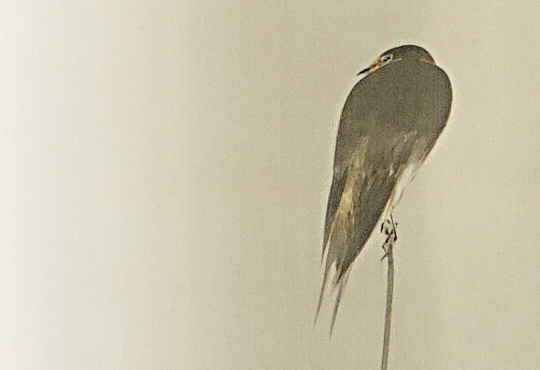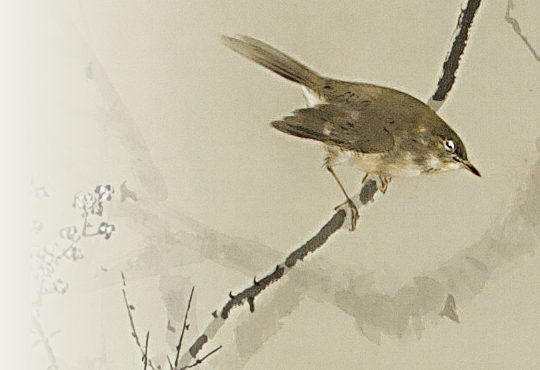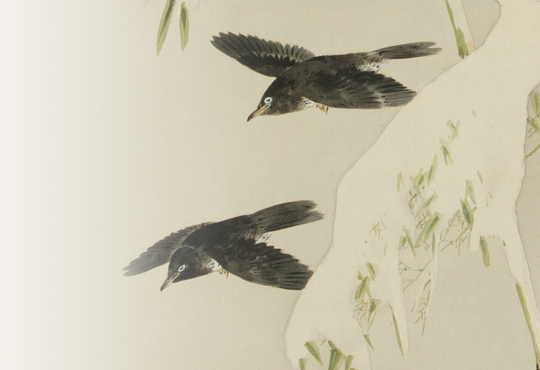A set of four scrolls, color on silk, with a box signed and sealed by the artist
116×41㎝
vol.37|Special Edition Seitei’s Crested Myna: Starlings on Pine Tree
Historically, Chinese paintings have had a strong influence on Japanese painting. The excellent works of Chinese painters such as Kiso and Mokkei were brought to Japan during the Muromachi Period (1336-1573), and the ink paintings and flower and bird paintings of Sesshu and Noami, which were modeled on them, greatly changed Yamato-e. Works painted during the Azuchi-Momoyama Period (1573-1603) and the early Edo Period (1603-1867) that are now considered to be a part of the Japanese painting genre would be seen as synonymous to Japanese films that felt foreign, due to their use of Hollywood CGI effects, yet still Japanese. Through these works, you can see how there was a preference for foreign birds, such as birds native to China that were not in Japan. Popular birds to note that were featured in various paintings includes, the golden pheasant, red-billed blue magpie, red-billed leiothrix and black-naped oriole.
Among this, the crested myna was commonly featured. Key examples include Kano Eitoku’s folding screen “Pine and Crested Myna, Willow and White Heron” (Kyushu National Museum), Kaiho Yusho’s sliding door “Pine and Crested Myna” (Kennin-ji Temple Zen Residence), as well as later examples, such as Ito Jakuchu’s “Moon and Crested Myna” (Okada Museum of Art), Yosa Buson’s “Hemp Palm and Crested Myna” (Jisho-ji Temple), and post-Meiji period works like Kawai Gyokudo’s “Crested Myna” (Tokyo Fuji Art Museum) and Yokoyama Taikan’s “Crested Myna” (Yamatane Museum of Art). These artists are legendary virtuosos who greatly influenced Japanese art. I don’t know who among them actually saw and drew real crested myna, but these birds are accurately depicted with a black body, large spotted wings, and their tuft feathers at the base of their beaks. The features are easy to render, draw in almost entirely in black and white, and able to create a foreign or Chinese feel. It must have been a very useful bird for painters.
As I have often mentioned in this column, Watanabe Seitei rarely depicted foreign birds. I think this is because he was very particular about realism and Japan. In fact, he has never painted the crested myna. However, since many contemporary painters painted them, crested myna paintings were very popular at the time, and Seitei must have been asked by clients to render them. I wonder how he responded to their demands.
This work is Seitei’s answer to that question. Three starlings perch on a branch of a large pine tree. With their dark gray bodies, yellow beaks and legs, white tails, and unique white facial patterns, the realism is outstanding. Compare the appearance and color pattern of this starling with the crested myna of other Japanese painters. Seitei’s starlings are unique and realistic, however, don’t these birds look similar? In fact, both belong to the same passerine starling family and are close biological relatives. It is unlikely that Seitei was well versed in the taxonomy of birds, but he must have looked for common birds similar to crested myna and figured out that starlings were hardly rendered by other Japanese painters. For Seitei, starlings may have been the “crested myna of Japan.”
The crested myna is not native to Japan, but in recent years they have spread throughout the Western Kanto region. This winter, I had the chance of seeing crested myna for the first time in Kagawa Prefecture. Dozens of birds were gathered on power poles and building roofs, and they were noisy, sometimes descending to the ground to peck at food and returning to the power lines and roofs. They looked exactly like starlings, bot only in appearance, but also in behavior. Hats off to Seitei’s ornithological foresight in his creative rendering of crested mynas into starlings.
Author : Masao Takahashi Ph.D. (Ornithologist)
Dr. Masao Takahashi was born 1982 in Hachinohe (Aomori prefecture) and graduated from Rikkyo University’s Graduate School of Science. Dr. Takahashi specializes in behavioral ecology and the conservation of birds that inhabit farmlands and wet grasslands. Focusing on the relation between birds and art, he has participated in various museum and gallery talks.
